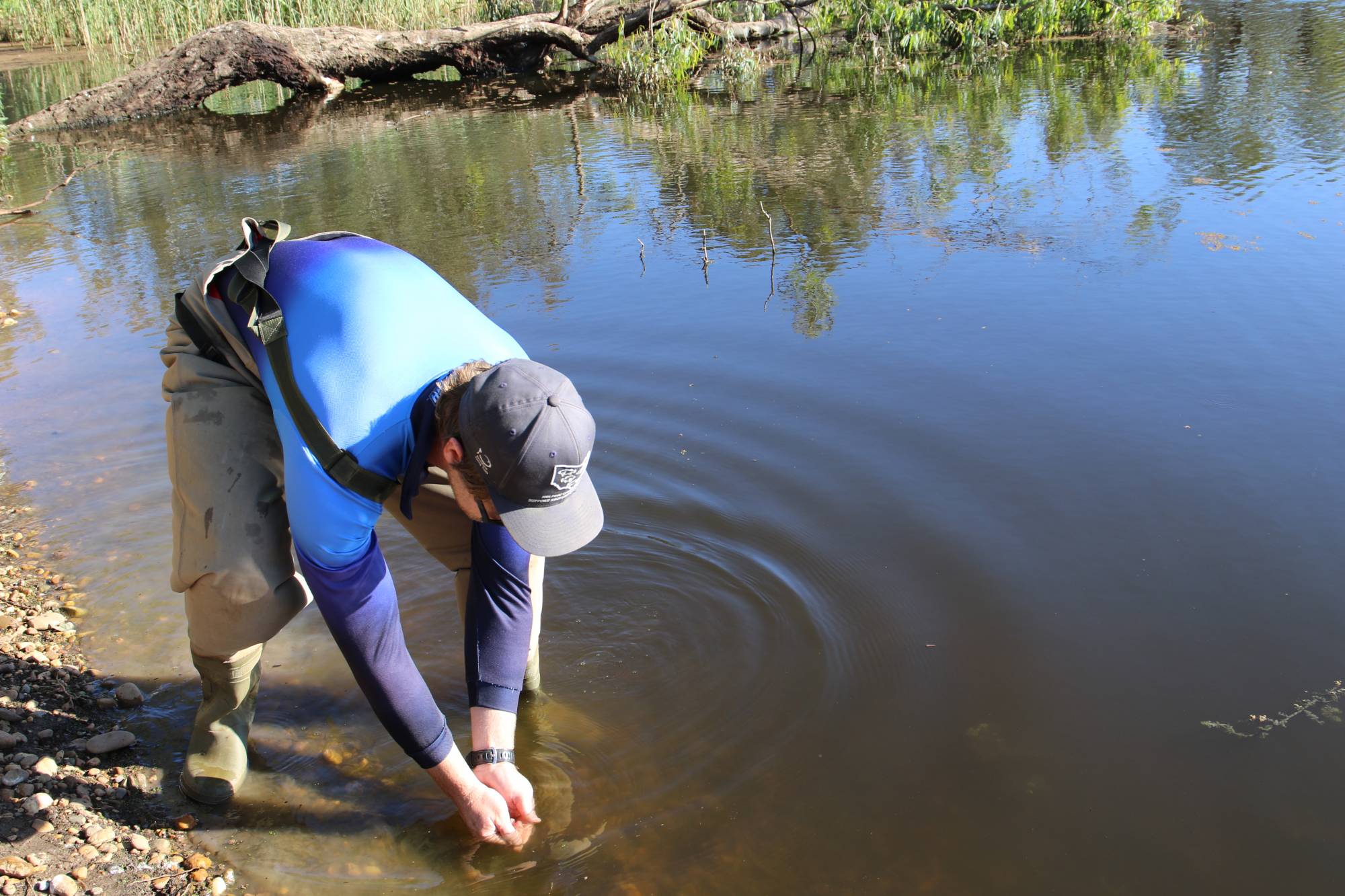Posted on 10th November 2020 by Media Relations
Southern Purple Spotted Gudgeon that were rescued and relocated to Taronga Western Plains Zoo in late 2019 are thriving in their new home.
The fish were rescued by the NSW Department of Primary Industries (DPI) Fisheries team and placed in the water body at the lion enclosure as part of a collaboration with the Zoo. Essentially the lions are now protecting a rare fish species and keeping it safe.
“We were really excited at the opportunity to partner with the NSW DPI Fisheries to protect these threatened native fish,” said Taronga Wildlife Conservation Officer, Phoebe Meagher.
The insurance population established at the Zoo is designed to breed and support the recovery of the species until conditions improved in the wild. The severe drought had seen a number of wild habitat for the Southern Purple Spotted Gudgeon dry up so they were moved to the Zoo to ensure they would have a secure habitat.
At a recent survey conducted by NSW DPI Fisheries it was confirmed that the threatened fish at the Zoo are reproducing with adults found in prime breeding condition and two different size juveniles. This indicates that they have bred at least twice since being released into the Zoo.
“We are hopeful that this population at the Zoo continues to thrive and we will works closely with NSW DPI Fisheries to manage the species at the Zoo,” said Phoebe.
Five additional rescued Southern Purple Spotted Gudgeon were added to the population at the Zoo last week to improve genetic diversity in the population.
“Hopefully there will be more breeding activity and the population continues to increase as a result,” said Phoebe.
The Southern Purple Spotted Gudgeon is a small freshwater fish native to Australia and listed as an endangered species in NSW. The fish grow to 15cm in length and are generally found in slow moving rivers, creeks and streams. Southern Purple Spotted Gudgeon were previously widespread in the Murray, Murrumbidgee and Lachlan River systems and tributaries of the Darling but the population has experienced a significant decline in recent times and they are now extremely rare in inland NSW.
